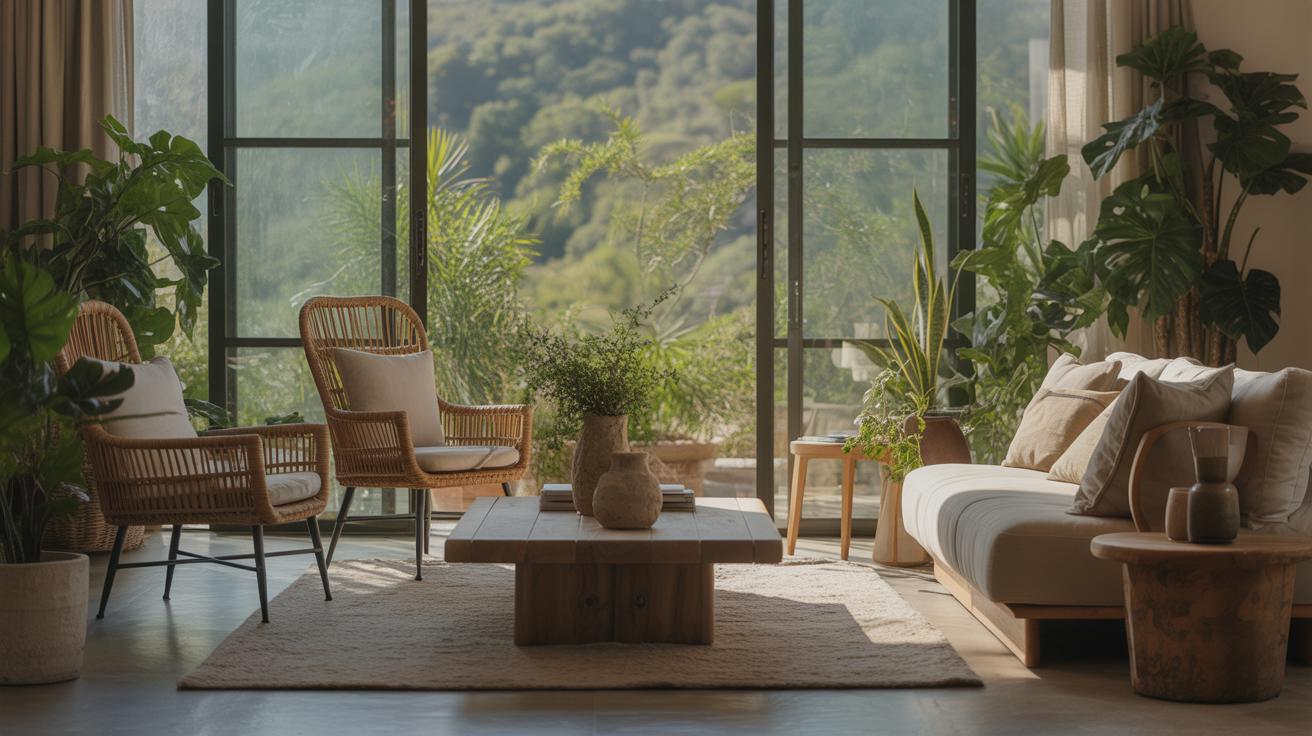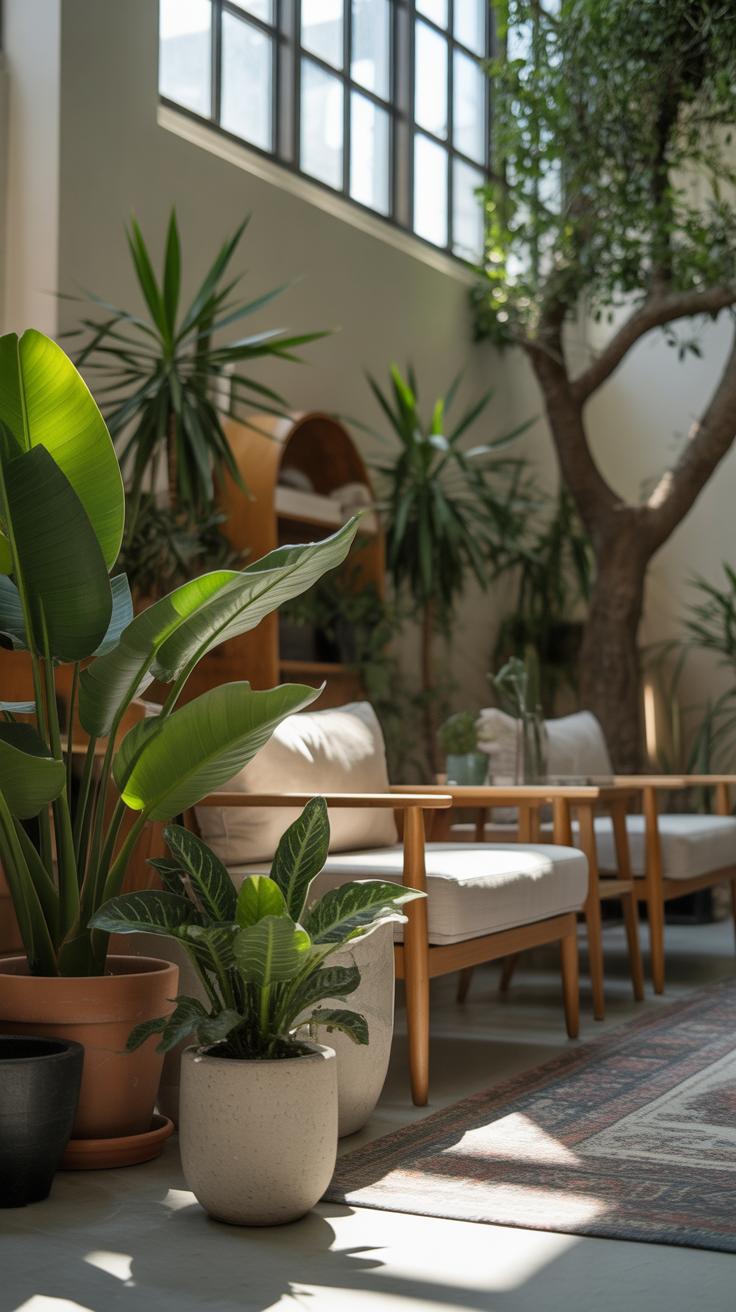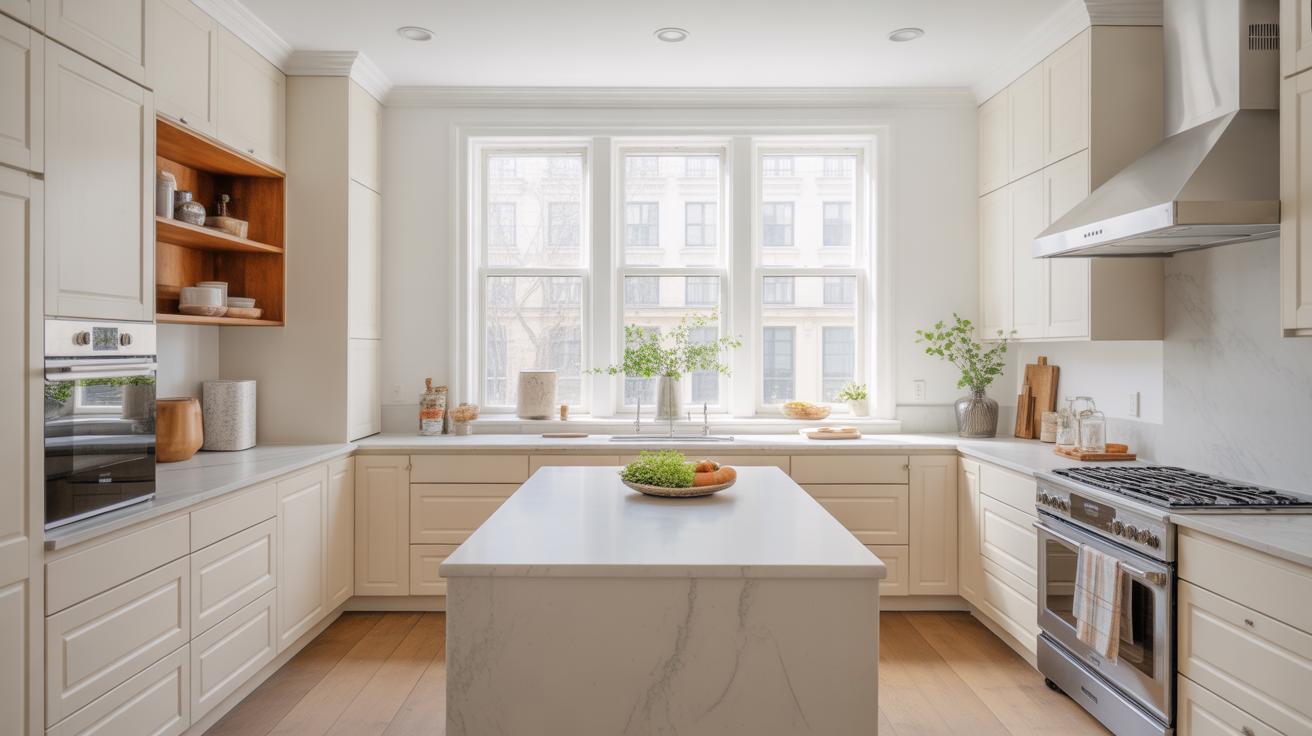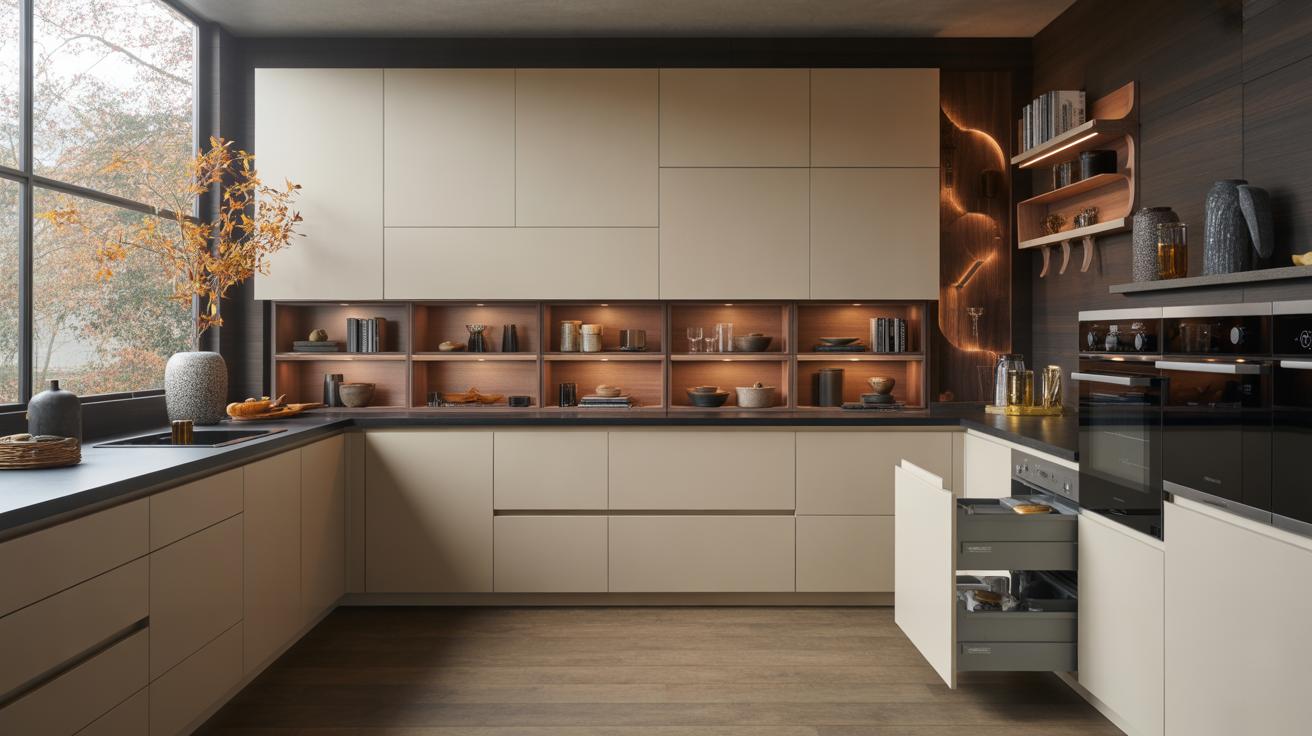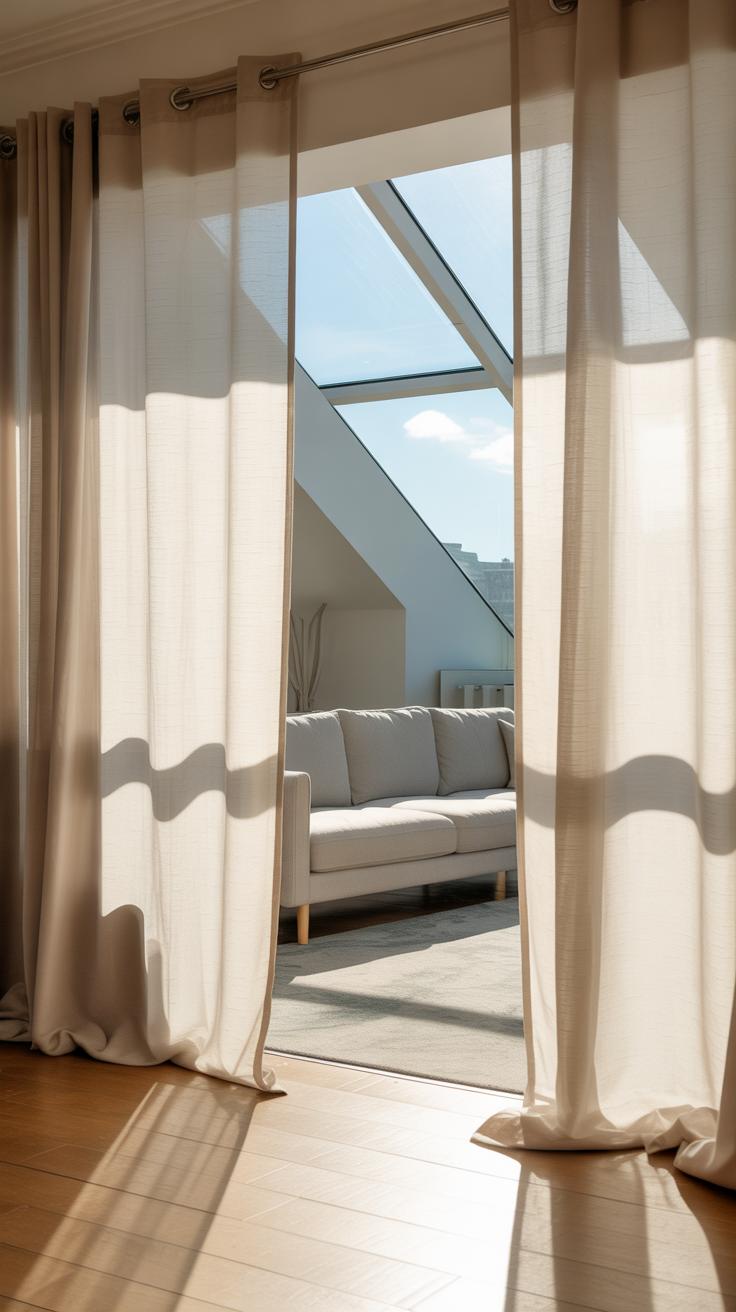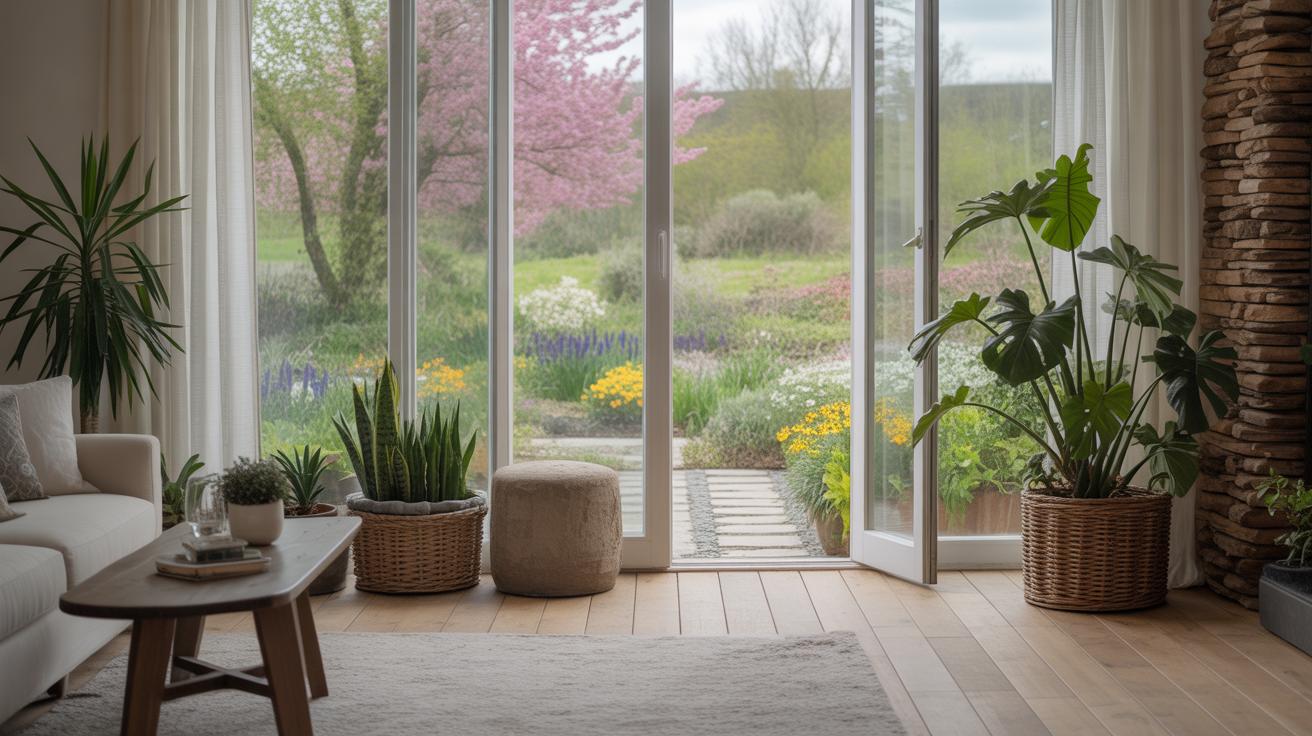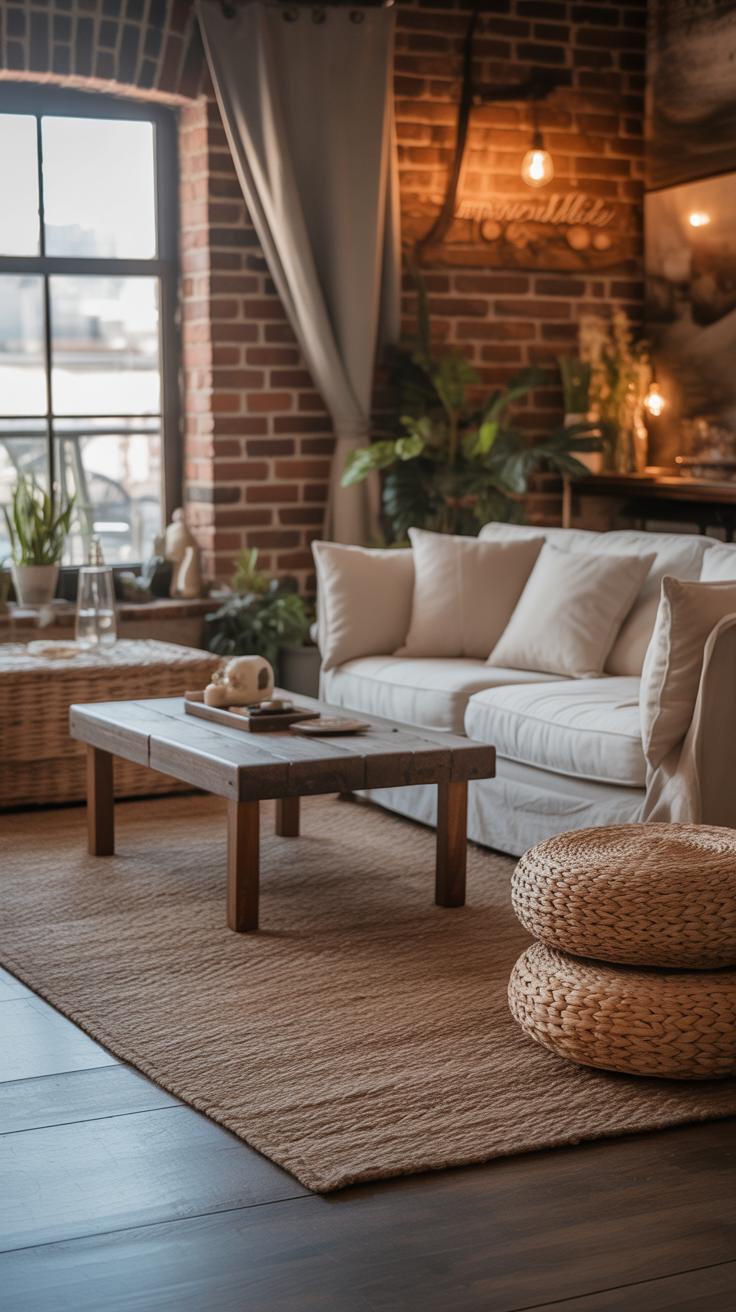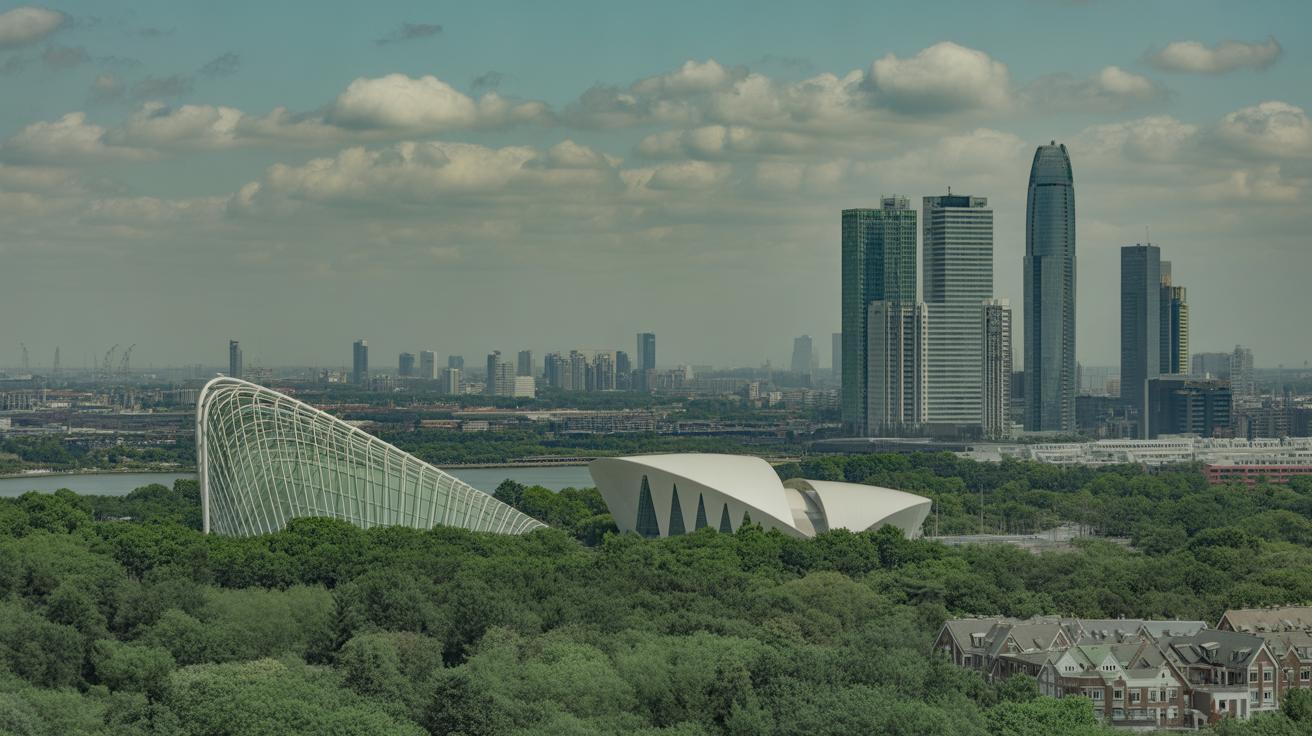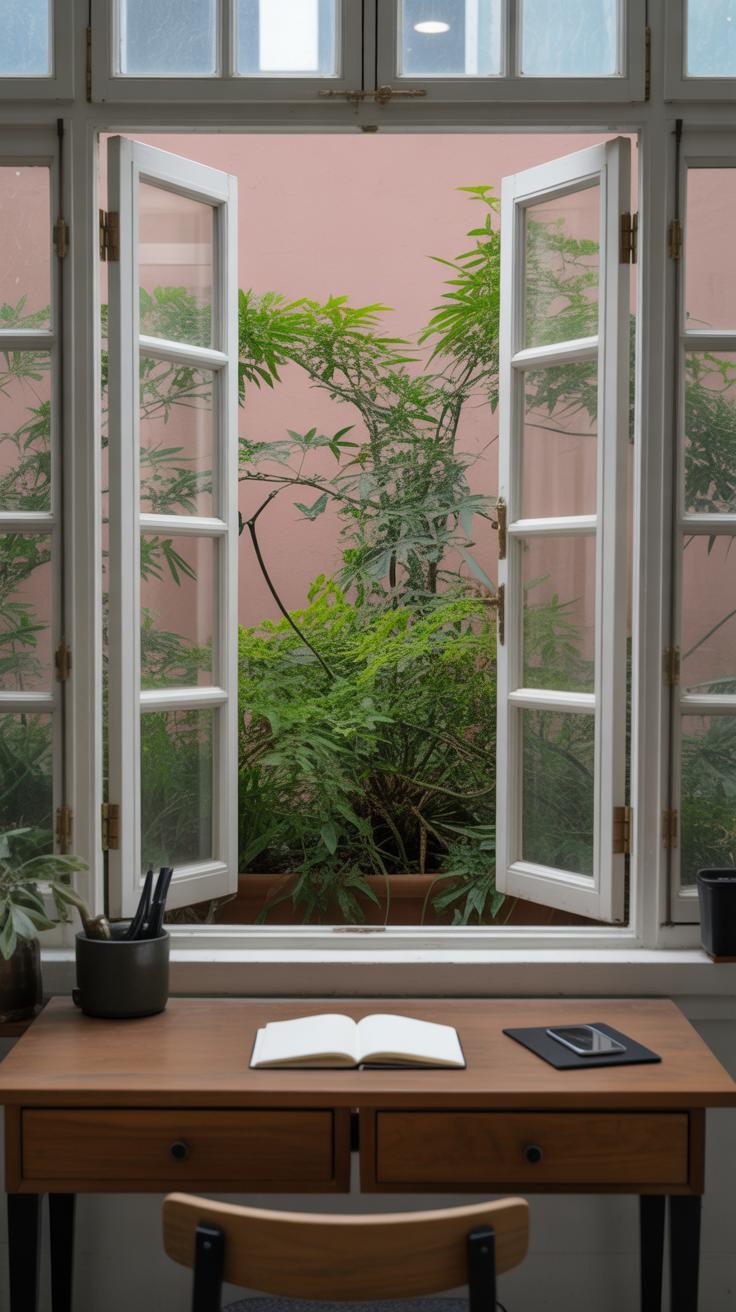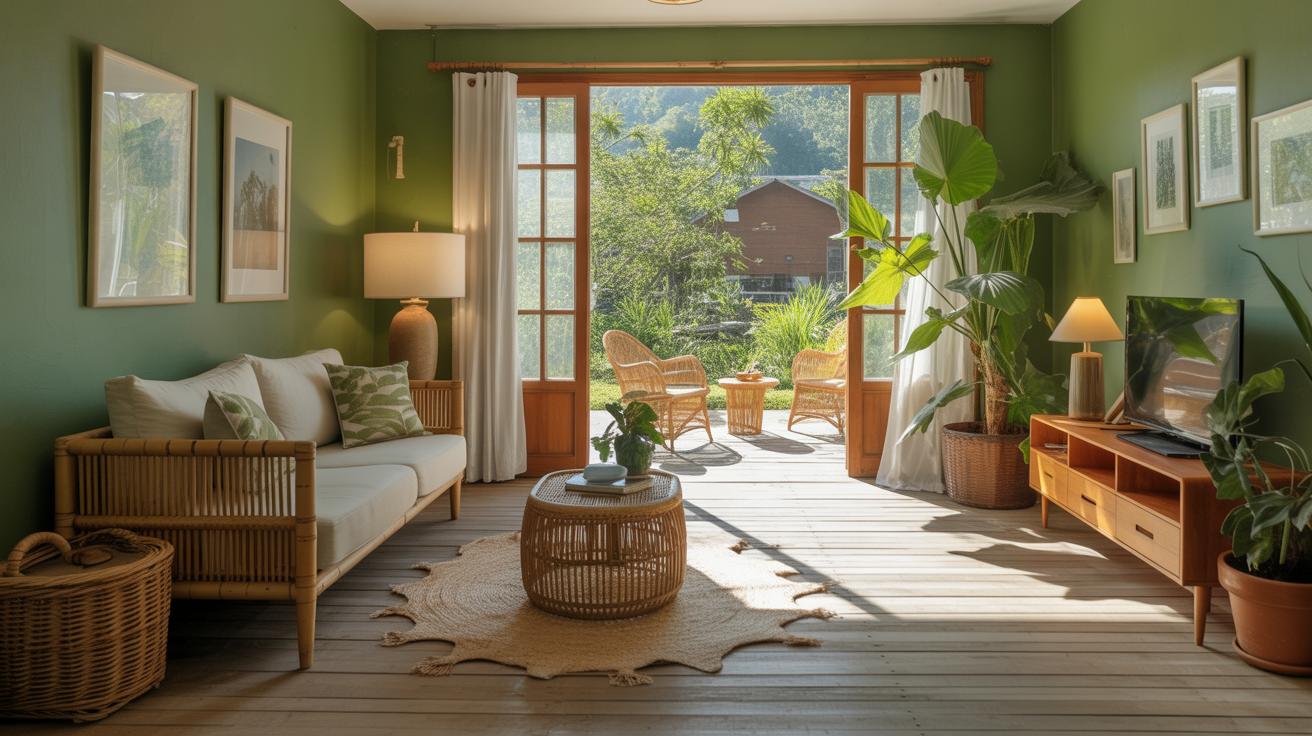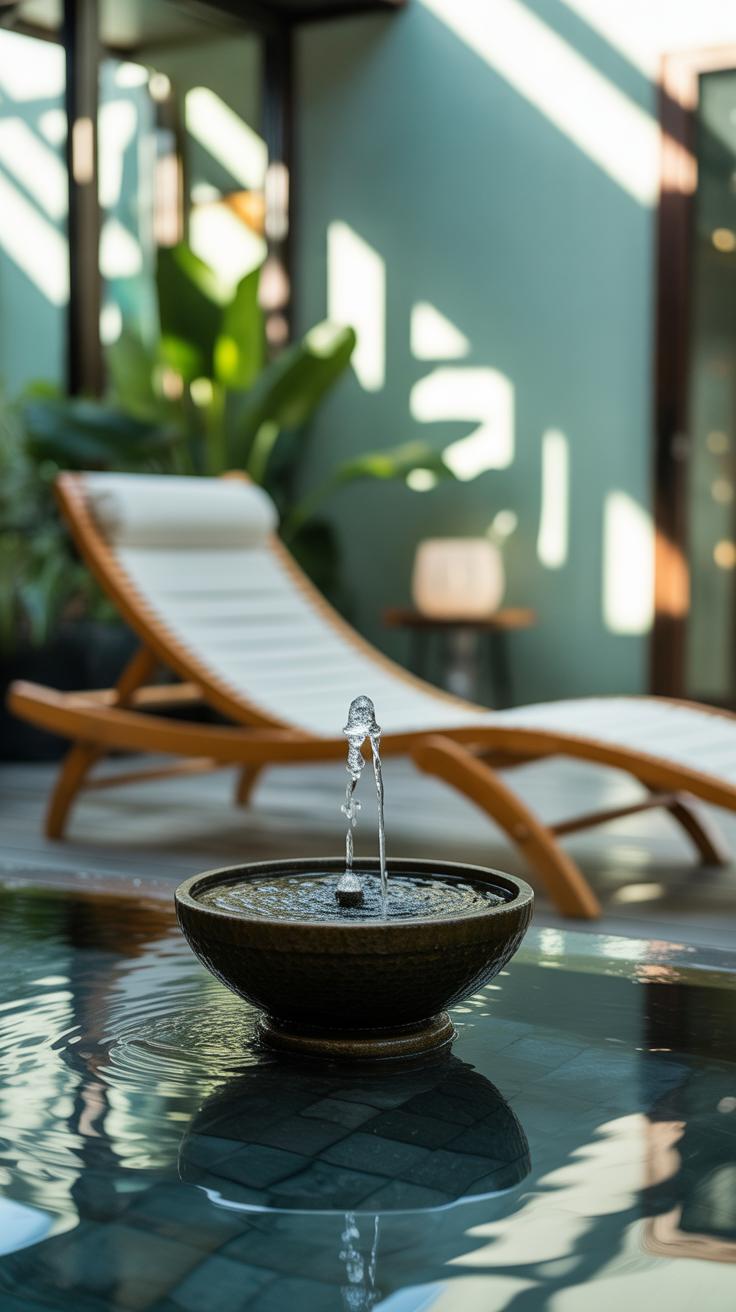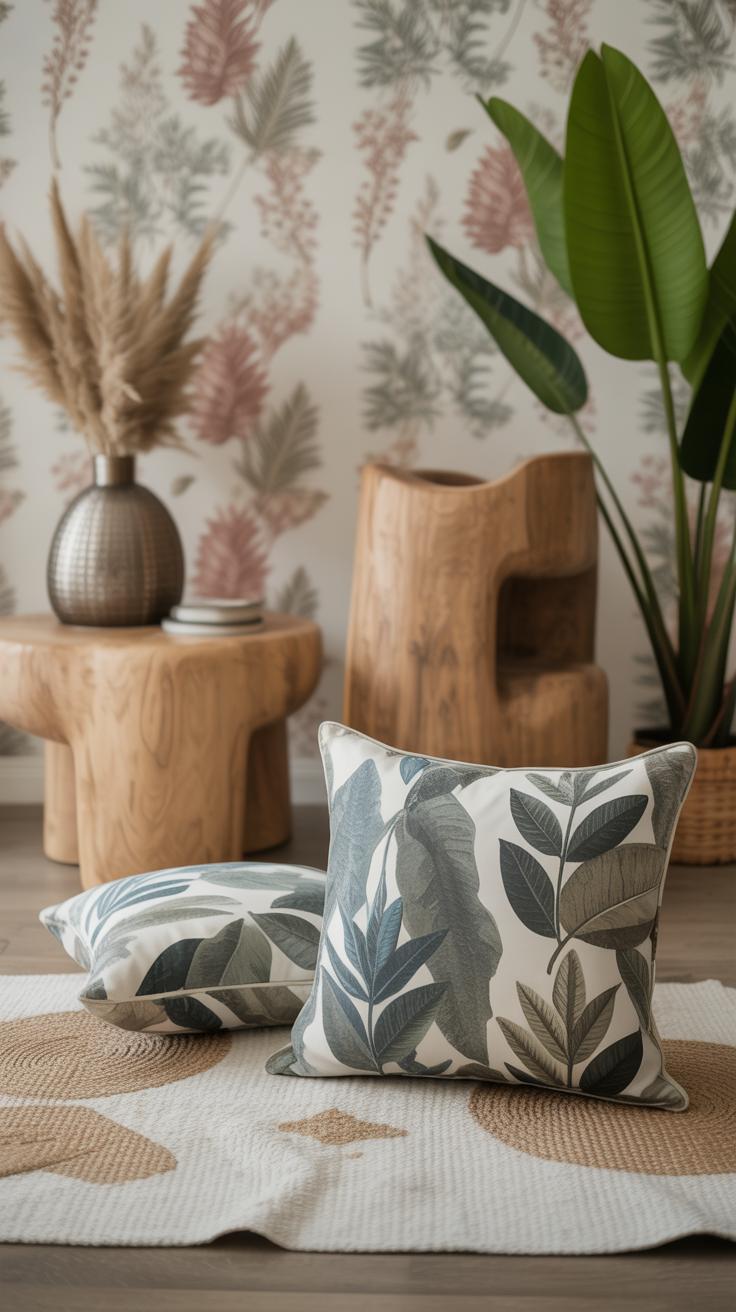Introduction
Biophilic design is about connecting people to nature through the spaces where they live and work. It uses natural elements like light, plants, and natural materials to create calm and fresh environments inside buildings. This design approach can boost your mood, reduce stress, and help you feel more comfortable at home.
In this article, you will learn how biophilic design works in interiors. We will explore ideas and practical ways to bring nature indoors. You will see how small changes can make your space more peaceful and enjoyable. The chapters will cover everything from the basics of biophilic design to choosing the right plants and materials.
Understanding Biophilic Design in Interiors
Biophilic design is about bringing nature inside. It’s a way to create spaces that make you feel connected to the outdoors, even when you’re indoors. The idea grew from the observation that humans seem to have a strong, almost instinctive, craving to be near natural elements. This connection can make interiors feel more calming and comfortable.
The term “biophilia” was popularized by biologist Edward O. Wilson, who suggested that humans have an innate tendency to seek connections with nature and other life forms. This idea is the foundation for biophilic design principles.
Some key principles include:
- Use of natural materials like wood and stone
- Incorporating plants and greenery
- Allowing access to natural light and outdoor views
- Creating spaces with organic shapes and patterns
These elements can reduce stress, improve mood, and even boost productivity. You might not notice it at first, but being surrounded by natural features can help your body relax and feel more at ease. It’s like a gentle reminder of the world outside, which we often miss while inside buildings.
The Meaning and Importance of Biophilia
The biophilia hypothesis says humans have a deep need to connect with nature. It’s not just a preference but something wired into us over thousands of years. Think about how spending time outside often refreshes your mind or how a view of trees can make a hectic day feel more manageable.
This need shapes the way we live and even our health. Studies show exposure to nature can lower blood pressure, reduce anxiety, and improve focus. Even small doses—a few plants by your desk or a window with a view—can make a difference.
For example, I remember feeling less tense after setting up a small herb garden near my kitchen window. It was a simple change, but seeing those plants thrive reminded me to slow down and breathe. The connection to nature doesn’t always have to be grand or dramatic to matter.
How Biophilic Design Shapes Interior Spaces
In interiors, biophilic design takes shape through thoughtful use of natural light, greenery, and textures. Light plays a big role—sunlight streaming through a window feels more soothing than artificial lighting.
Plants add life and soften hard surfaces. Even artificial plants can help, but real ones do a bit more—they add oxygen and a touch of unpredictability, which feels natural.
Natural materials like wood or stone bring texture and warmth that synthetic materials often lack. Then there’s the importance of views: having a window that looks onto a garden or trees can give a small but significant boost to your mood.
All these elements work together to create interiors that don’t just look nice but feel alive. They can make a room less stressful and more inviting. Yet, it’s not about filling every corner with green or wood—it’s about balance and creating moments of calm in your everyday spaces.
Natural Light and Its Role in Calm Interiors
How Sunlight Affects Your Health and Mood
Natural light isn’t just about brightness; it plays a deeper role in how we feel and function. Exposure to sunlight helps boost serotonin, a chemical linked to positive mood and focus. When the day dims, melatonin rises, signaling your body it’s time to rest. This daily rhythm—your circadian cycle—relies heavily on natural light cues. Without enough of it, sleep patterns may shift unpredictably, leaving you restless or lethargic.
You might have noticed your energy dips on gray days, or that mornings filled with sunlight feel more refreshing. That’s no coincidence. Even short bursts of sunlight indoors can lift spirits, reduce stress, and sometimes—even improve concentration. So, welcoming sunlight into your living space isn’t just aesthetic. It’s a subtle nudge toward healthier bodily rhythms and a calmer state of mind.
Simple Ways to Add More Natural Light
Bringing more daylight inside doesn’t call for a major overhaul. Sometimes, small changes do the trick. Consider swapping heavy drapes for sheer curtains. They let light through while preserving privacy—a balance that makes a room feel open without exposing everything. Mirrors are another easy tool. Placed on walls opposite windows, they catch and bounce light around, making a space brighter and larger than it actually is.
Window placement matters too. If you’re renovating, bigger or more windows on the sun-facing side can make a notable difference. Skylights, if practical, add a vertical source of daylight that penetrates even the deepest corners. Light-colored walls and reflective surfaces don’t just look clean; they push daylight further inside. These steps may seem simple, but their impact on your well-being can be surprisingly strong.
Incorporating Greenery for a Fresh Indoor Atmosphere
Plants play a surprisingly big role in shaping biophilic interiors. They don’t just fill empty corners or look nice on shelves; they bring a sort of quiet vitality that’s hard to replicate. Beyond decoration, greenery physically changes the air you breathe and the way you feel in a room.
Indoor plants can improve air quality by filtering toxins and increasing oxygen levels. I remember reading about studies where having just a few plants in an office reduced airborne dust and improved humidity—factors that can subtly boost comfort. There’s also something calming about seeing living things thrive around you, even if it’s just a small fern or a spider plant.
Stress reduction is another benefit that often surprises people. Maybe it’s the green color or the gentle care involved; either way, people living with plants often report feeling less anxious and more focused. There’s even evidence suggesting plants encourage a better mood and increase feelings of happiness.
Benefits of Bringing Plants Into Your Home
Besides freshened air, plants have an almost tangible effect on mood. Imagine walking into a living room with a few well-placed plants: the atmosphere changes. It feels lighter, quieter, somehow more alive without being overwhelming. Studies have shown that environments with plants can lower heart rate and stress hormones.
For example, a peace lily is known to filter out common air pollutants like ammonia and formaldehyde, improving overall air quality. Meanwhile, plants like lavender or jasmine might even promote relaxation through their scent, which—yes—can affect your well-being without you always noticing.
Best Indoor Plants and How to Care for Them
If you’re new to plants, starting small and simple is key. Here are some that tend to do well even if you forget to water them occasionally:
- Snake Plant: Tolerates low light and infrequent watering. Place it away from direct sun but not in complete darkness.
- Spider Plant: Thrives in indirect light and bounces back quickly if you miss a watering.
- Pothos: Does well in various light conditions; water when the top inch of soil feels dry.
- ZZ Plant: Survives low light and drought; perfect for less sunny spots.
- Succulents: Need bright light and little water; good for kitchen windowsills.
Placement matters too. Plants near windows not only get better light but also help blur the line between indoors and outdoors. Watering routines vary, but a good rule is to check soil moisture before watering. Too much care might actually harm them more than neglect, funny as it sounds.
Have you noticed how just a single plant changes a room’s vibe? That’s the essence of bringing nature inside—small actions shaping daily life.
Using Natural Materials for Comfort and Warmth
Natural materials like wood, stone, and cotton form the heart of biophilic interiors. They do more than just decorate a room; they bring a sense of calm and connection to the outdoors. When you touch wood or feel the coolness of stone beneath your feet, you experience a subtle reminder of nature’s presence. This adds warmth—not just physically but emotionally—to your home.
Wood’s texture and grain create a visual softness that feels inviting. Stone offers an organic contrast, grounding the space and introducing a subtle ruggedness. Cotton and other natural textiles complete this palette, making the environment feel both comfortable and real. These materials tend to age well, too, which somehow adds to their appeal—nothing artificial about that.
Choosing Wood and Stone for Your Design
Wood makes an excellent choice for furniture and flooring because it varies widely. You can pick light tones for an airy look or richer shades for coziness. The natural knots, lines, and imperfections of wood give each piece personality. If you think about it, a wooden dining table or exposed ceiling beams can serve as a constant visual link to nature’s complexity.
Stone, on the other hand, offers durability and cool textures that balance warm wood tones. It works well in countertops, accent walls, or flooring. You might want to select polished stone for sleekness or rough-hewn slabs for rustic charm. Yet, mixing wood and stone requires a delicate hand—not too much stone or it could feel cold, not enough, and you may lose the grounding effect.
Textiles and Accessories That Feel Natural
Natural textiles like cotton, wool, and linen add softness you can almost feel with your eyes closed. Their textures bring extra comfort, making a space inviting without fuss. A wool throw or a linen cushion can soften a harder edge of wood or stone furniture, lightening the overall feel.
These materials also breathe better than synthetics. This subtle airflow can affect how the room feels over time, keeping it fresher. Cotton curtains filtering light or a jute rug underfoot brings tactile interest. I often find that mixing these fabrics introduces just the right hint of imperfection—folds, wrinkles, even slight roughness—that keeps interiors real and cozy.
Creating Views and Visual Connections to Nature
Why Views of Nature Matter in Design
There’s something quietly powerful about looking out a window and seeing greenery or open skies. Even brief glimpses of nature can ease tension and calm the mind. People naturally respond to natural views with lower stress levels and improved mood. It’s why homes with windows facing gardens or trees often feel more peaceful. Think about a living room where the sofa faces out towards a leafy backyard. You might find yourself lingering there more often—just watching the subtle movements of leaves or the shifting light.
You don’t always need a grand view, either. Smaller pockets of nature—like a fenced-in garden patch visible from the kitchen—can provide that same kind of comfort. Does your home have windows oversized enough to invite in those moments? If not, arranging seating or workspaces near available windows lets you sneak in that calming connection, perhaps more than you realize.
Crafting Visual Nature Elements Indoors
Sometimes the outdoors just isn’t within reach. Urban settings can limit actual views, leaving you to wonder how to capture even a hint of nature inside. That’s where visual elements like photos, murals, or art inspired by natural shapes can come in handy. A large mural of a forest or a serene lake can anchor a room with a sense of openness, even if it’s just a wall.
Natural motifs—curves like shells, leaves, or wood grain patterns—help mimic nature’s forms subtly. You might hang framed photographs of flowers or landscapes where you spend a lot of time. Those images don’t need to be elaborate; even close-up shots of bark or stone textures bring nature in quietly. It feels a little artificial sometimes, yes, but better than no nature at all.
Have you ever noticed how just seeing these visuals can lift your mood? They remind you that nature is nearby—even if only in images—and that might be enough on a tough day. Creates a small escape indoors, inviting calm without needing a large green space right outside your window.
Water Elements to Enhance Tranquility
Water features bring a unique calmness to interior spaces. There’s something about watching water ripple or hearing its flow that invites relaxation—a kind of quiet focus. Whether it’s a small tabletop fountain or an aquarium nestled in a corner, these elements shift the mood instantly. The gentle sound of water, soft and irregular, masks harsher noises and eases tension in the room. At times, I find the movement of water almost hypnotic—slow waves or trickling streams draw the eyes and settle the mind, though I realize not everyone responds the same way.
Sound and Sight of Water for Peace
The soothing effects of water come largely from its sound and motion. A consistent, soft splash or trickle calms breathing and thought patterns subtly. Water walls, with their continuous sheet of liquid, create a gentle background noise that feels natural without demanding attention. Indoor fountains offer a similar experience but with more visual variation—a cascade or bubble might catch your eye one moment, then disappear the next. These small movements remind us of natural rhythms, which seem to relax most people, though sometimes the sounds might blend into the background—good or bad depends on your mood.
Simple Ways to Add Water to Your Space
If you’re thinking about adding water to your home, options don’t have to be complicated. A self-contained tabletop fountain is easy to set up and usually just needs a power source and occasional refills. Aquariums demand more care but can be incredibly engaging if you like watching fish or plants thrive. For safety and maintenance, choose fountains with recirculating pumps to prevent water stagnation. Keep in mind, water spills can be an issue—placing features on waterproof trays or hard surfaces often helps. Most setups require little daily upkeep but check for algae growth or mineral buildup; a quick rinse or wipe regularly can go a long way.
Designing with Natures Patterns and Shapes
Shapes found in nature—like the curve of a leaf, the ripple of waves, or the spiral of a shell—hold a quiet power in interiors. They don’t just add decoration; they draw the eye gently and create subtle movement within a room. When you notice a pattern that mimics nature, there’s an almost subconscious connection, a sense that this feels right, familiar even.
These patterns can influence mood—soft curves tend to soothe, while repetitive waves can ground your attention without overstimulation. I’ve found that a wallpaper with delicate leaf motifs makes a room feel alive but calm, unlike harsh geometric designs that sometimes tire the eye. You might wonder why one pattern draws you in and another pushes you away—that curiosity itself keeps a space interesting.
Nature’s Patterns and Their Impact
People seem to find nature’s patterns calming, perhaps because they echo environments where humans thrived. There’s no strict rule for why—a mix of biology and habit, maybe. Textiles often use these shapes: think soft fern prints on cushions or oceanic swirls on curtains. Wallpapers too, sparkling with shell or wood grain designs, give walls a comforting rhythm.
Decor items like carved wooden bowls or ceramic vases shaped to mimic seed pods don’t just fill space but invite touch and exploration. The subtle irregularity in these patterns breaks monotony and keeps the senses alert, but not on edge.
Adding Natural Textures and Shapes at Home
Bringing these tactile and visual elements indoors doesn’t need to be complicated. You could try:
- Picking furniture with rounded edges or natural wood grains that display organic knots and waves.
- Incorporating fabrics printed with leaf or wave motifs for throw pillows or curtains.
- Using decorative items such as driftwood sculptures or lamps shaped like shells.
If you’re a bit crafty, try creating your own lino prints with leaf shapes or even pressing leaves into clay to make unique coasters or wall hangings. Buying locally made, handcrafted items might offer pieces with richer, less uniform patterns that bring more life into your space.
It’s easy to get caught up in trying to make everything match perfectly. Yet, these natural forms often work best when contrasted slightly—a smooth pebble beside a rough textile, for instance. That tension between shapes adds depth, and you might notice it makes spending time in the room a little more engaging than you expected.
Practical Steps to Start Your Biophilic Interior
Assessing Your Space for Biophilic Potential
Take a good look around your home. Notice where natural light streams in and where it doesn’t. Often, corners near windows or odd nooks can become great spots for greenery or natural textures. Think about the materials already present—wood floors, stone accents, or even fabric patterns. What feels close to nature, and what feels too artificial? Maybe the room needs more softness or more earth tones. Make a quick list of these places and materials. Seeing your space this way can reveal both strengths and gaps you might not have noticed before.
Simple Projects to Bring Nature Inside
Start small—perhaps with a potted plant on a windowsill or a new arrangement of furniture that lets in more daylight. You’d be surprised how moving a chair or adding a small herb garden can change the feel of a room. Try swapping out a throw pillow for one in a leafy or stone pattern. Nature-inspired art works too, especially in spaces where plants won’t thrive. It’s about adding layers bit by bit, not overhauling everything at once. Sometimes just a tiny change makes the whole room feel calmer—and let’s be honest, those changes can also give you a real sense of accomplishment.
Begin by choosing one area you’d like to improve. Could it be a bedside table, your home office desk, or the kitchen counter? Bring in something natural there—a wood tray, a stone sculpture, or a glass vase with fresh flowers. Over time, these little touches can shift your home’s vibe toward something more restful and nature-connected. You might find that some additions work better than others, and that’s okay—biophilic design doesn’t have to be perfect from the start.
Conclusions
Biophilic design offers simple tools to make your home a place where you feel safe and relaxed. Bringing natural light, plants, and organic materials into your interiors helps you stay connected to the natural world. This connection supports your mental and physical health.
By applying the ideas shared in this article, you can craft spaces that feel tranquil and inviting. When you bring nature closer, you invite a sense of peace and wellness into your daily life. This balance between the indoors and outdoors transforms your home into a nurturing sanctuary.

